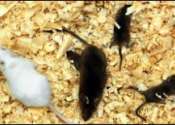Thomas Edison's first wife may have died of a morphine overdose
When Louis Carlat and his colleagues at the Thomas Edison Papers, which is based at Rutgers University, began working on Volume 7 of the papers in 2006, they benefitted from what Carlat calls “an explosion of available ...






